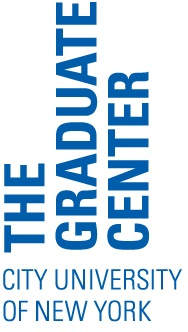CVs vs. Resumes

Graphic design by Joseph Paul Hill
Depending on what kind of job you are applying for, you will be asked for different types of application materials. While academic jobs for faculty positions, in particular, prefer CVs, most industry jobs will request a resume instead. It’s important that you not confuse these two important documents, as they each have very different lengths and content. This blog post will explain the key similarities and differences between CVs and resumes.
Similarities
Purpose
CVs and resumes are marketing tools, and the goal of both is to land you an interview. Although they do so in different ways, these two job documents share a common purpose: to provide a hiring committee with information about your professional experiences, which they will use to determine your fit for a particular position.
Clear and Consistent Formatting
Whether you’re crafting a CV or resume, you should keep your formatting clear and consistent. If you italicize one position title, you should italicize all position titles. Use only one font regardless of the document type, and make sure it’s big enough to be legible and common enough that an HR’s applicant tracking system will be able to search it for keywords. While it’s okay to play with your margins to help fit more information, use your best judgment to keep it from looking too cluttered or overwhelming. Information on both CVs and resumes should appear in reverse chronological order.
Name and Contact Information
The first item on either a CV or resume should be your name and contact information. Even if a search committee really likes your application, if your contact information isn’t readily available, it’s unlikely they will take the time to hunt it down. Remember to include your name and both an email address and phone number.
Differences
Scope
While the purpose of CVs and resumes is similar, their scope is quite different. A CV is a much more comprehensive document, seeking to give a detailed inventory of your entire professional life. A resume, on the other hand, highlights only aspects of your work life that are relevant for the particular job to which you’re applying.
Length
As a result of their different scopes, CVs and resumes vary in length. A CV has no page limit. The more accomplishments you’ve earned, classes you’ve taught, or positions you’ve held, the longer your CV will be. As you gain more professional experiences, your CV will only continue to grow.
Conversely, a resume should always be limited to 1-2 pages. For those just beginning their careers, 1 page will likely suffice. (Remember: You’re highlighting only your most relevant experiences.) Once you’ve been in a field for many years and are applying to more senior positions, your resume may expand to 2 pages.
Categories Included
Because CVs are often used to screen applications for faculty positions, their categories reflect the values of academia. A CV will include information about your educational background, work experience, publications, conference presentations, awards, contributions to the field (or service), and professional memberships—all of which will prove that you have what it takes to meet the research and teaching demands of tenure-track positions.
Resumes, on the other hand, place much more emphasis on your work experience. While you will likely still include information about your educational background, oftentimes categories such as publications and presentations are cut to leave more space to highlight the tasks and responsibilities associated with the different jobs you’ve had. Unlike a CV, you may also choose to begin your resume with a “summary statement,” which is a brief paragraph or series of bullet points that summarizes your strengths and qualifications. For more information on what to include on a resume, see our blog post “What Belongs on a Resume?”
How You Describe Your Work Experience
When you talk about teaching and research experience on your CV, it is generally enough to simply include the position title, institution, and what classes you taught or areas you researched. Your search committee will already be familiar with the tasks and responsibilities of these positions.
However, a resume describes your work experience in much more detail. These hiring committees will be less familiar with the ins and outs of your past positions and will be eager to know how your experience correlates with the desired traits and qualifications of the position they’re trying to fill. When discussing work experience in your resume, you will list bullet points describing what you did and accomplished in each position, making sure to connect them to what’s being asked for in the job ad.
Amount of Tailoring
While CVs should be lightly tailored to the type of institution to which you’re applying—for example, by listing teaching experience before research experience for a job at a teaching-focused institution or vice versa—resumes often look very different depending on the job you’re seeking. You should look for keywords in the job ad and strive to include them in your resume by highlighting the experiences you’ve had that rematch. Resumes are highly specific documents. You may mention totally different experiences in different versions of your resume.




